During the lesson, the information for you to know is written in regular type, and what we suggest speaking or reading aloud to children is in bold. All resources for this lesson, including the Teacher Guide, Student Page, Family Connection Card, and other resources can be downloaded in a ZIP file by clicking on the following link:
In some lessons you will find "resource articles." These are articles written by experts from around the world to help equip you for your work with children and adolescents. Share them with parents or guardians if you consider it appropriate.
Then Peter remembered what Jesus had said. “The rooster will crow,” Jesus had told him. “Before it does, you will say three times that you don’t know me.” Peter went outside. He broke down and cried.
Matthew 26:75
Peter cried when he realized what he had done to his friend and Lord. He had just watched a mob of soldiers arrest Jesus. He had seen the other followers run away. He wanted to be near to see what happened, even though he was probably afraid. When accused of being with Jesus, he denied his friend not once, but 3 times. While it may be easy to judge Peter for not being honest in this difficult situation, imagine yourself in his place for a moment. When facing danger, shame, or other difficult things many of us may also be tempted to be dishonest.
Consider your own life. Have you ever lied to or about a friend? Were you trying to help someone? Were you trying to protect yourself or someone else? Were you concerned about what others would think of you if you were honest? It is wrong to lie. Fortunately, God knows that we are not perfect and understands that we will make mistakes. He hears your cries when you realize the wrong things you have done. Take a moment to pray for God to give you an honest heart even when it is difficult. He hears you!
Encourage families to talk about why it is sometimes difficult to tell the truth. Have them share about why people might lie instead of telling the truth.
Teacher Tip: If possible, email or text the Family Connection Card to the families of your students.
Greet your children as they come to class. Ask them to think about what they learned during the last class and share 1 fact with another child. Then have the children sit in a circle.
Allow 1–2 children to respond.
We have been learning about truth and honesty! When we tell the truth, people trust us. This helps us to build relationships. Let’s talk about what happens when we lie instead of telling the truth.
As I tell you something about what lying does, the person holding the ball of yarn will hold on to the end of the yarn and roll the ball across the circle to another child. The next child will then hold on to the yarn and roll the ball across the circle to another child. Try to pass the yarn to someone on the opposite side of the circle. We are creating a tangled web!
Give the ball of yarn to a child and help him to pass the ball across the circle while still holding on to the end. Then make sure the next child passes the yarn before reading the information about lying below. As you talk to the children about lies, have them pass the yarn back and forth across the circle. If needed, remind the children to hold on to the yarn as they pass it so that they can create a web.
When we tell lie after lie, it can create a web. We tell a lie, and then we must remember what we said. Then we tell another lie, and we must remember both lies. After a while, we can get so tangled in our lies that we become trapped. It can be very difficult to get out of this web, and it can cause people to not trust us.
If the children are still passing the yarn, give them time to finish making a web.
The tangled yarn in front of you has been made into a web. The only way to untangle the web is to tell the truth.
I want each of you to think of something true to say. In a moment, we will untangle our web by pulling the yarn back across the circle. As we untangle this web, we will go around the circle and take turns saying something true. For example, I might say, “The sky is blue.” This is true.
Choose a child to start by saying something true. Then ask the child who had the yarn at the end of the game get up and give the end of the yarn to the person who passed it to her. Have the children continue to pass the yarn back and forth as others tell true statements until the web is completely untangled. If the children are not able to completely untangle the web, explain that sometimes our lies make it very difficult to fix our relationships with others.
Optional: If you are using Student Pages, give the children crayons and allow 2–3 minutes for them to complete their mazes.
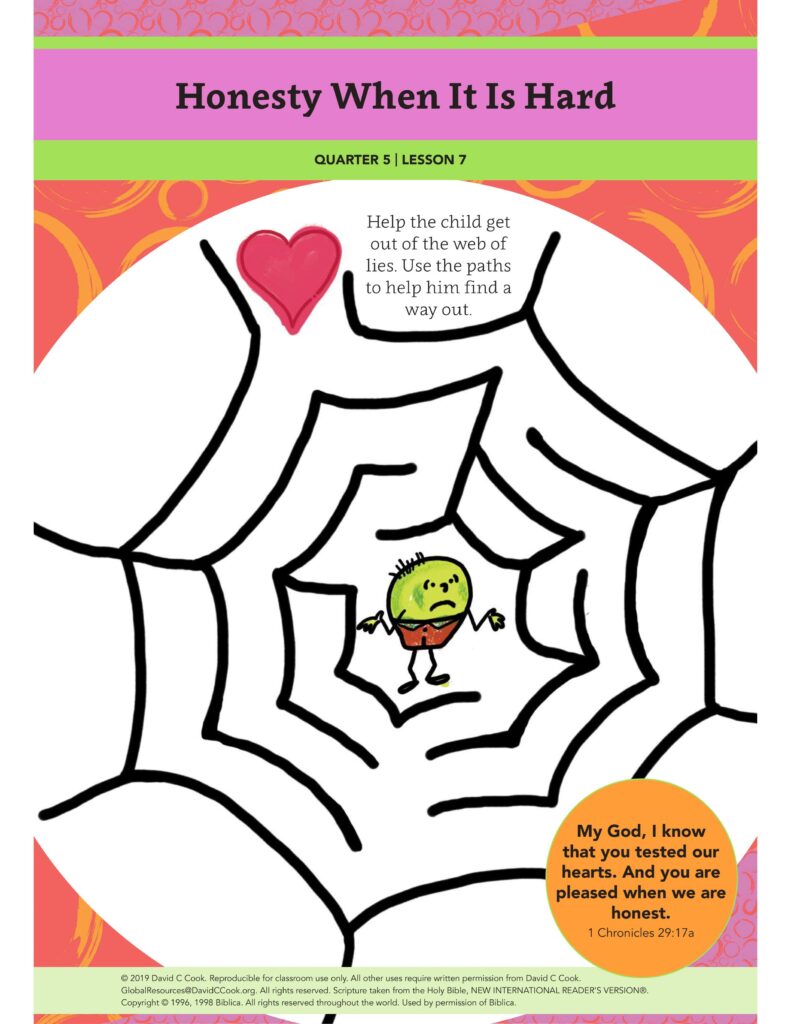
This activity showed us what lies can do and how difficult it can be to fix relationships with others when they are tangled and twisted. That is one reason why it is best to tell the truth.
It is not always easy to tell the truth. When something scary happens or we do something we know might cause trouble, we may lie because of our fear. This was true for one of Jesus’ disciples named Peter. Listen to this true story from the Bible.
If you are using the images from The Action Bible, show them as you tell the story.
Jesus was with His disciples in a garden. A group of soldiers arrested Jesus because their leaders did not believe He was the Son of God. All of Jesus’ followers ran away. But Peter and another disciple followed to see what would happen.
If possible, show The Action Bible images as you tell the story.
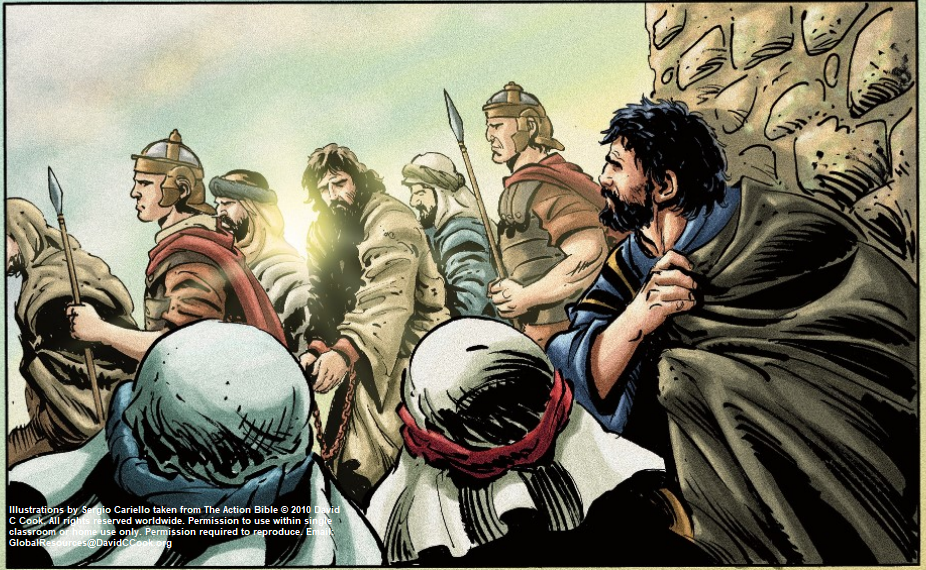
Allow 2–3 children to respond.
It might be scary to watch your friend get arrested. It would definitely be scary to know that something very bad was about to happen to your friend. Let’s listen to what happened to Peter. As he entered the courtyard, a servant woman came up to Peter.
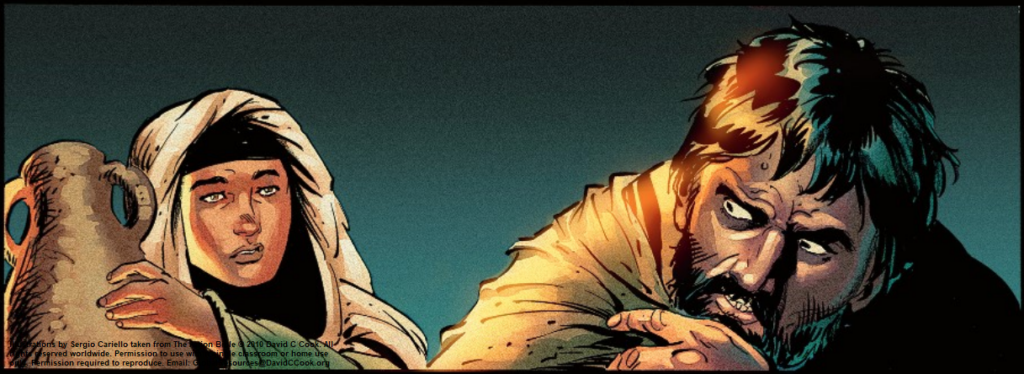
Read this verse directly from your Bible.
She asked Peter, “You aren’t one of Jesus’ disciples too, are you?” “I am not,” he replied.
John 18:17
Peter lied and said he was not Jesus’ disciple!
Allow 2–3 children to respond.
What happened next might surprise you. Peter waited in the courtyard while the other disciple went to speak with the high priest. While he was waiting, people asked Peter 2 more times if he knew Jesus. Both times Peter said he did not know Jesus!
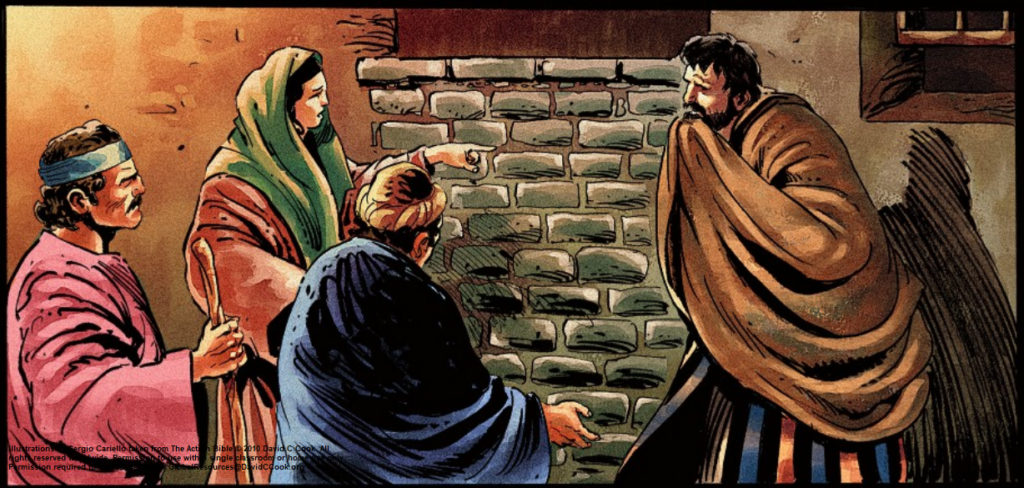
The Bible does not tell us why Peter denied knowing Jesus. But the Bible does tell us that Jesus knew ahead of time that Peter would do this. The Bible says:
Then Peter remembered what Jesus had said. “The rooster will crow,” Jesus had told him. “Before it does, you will say three times that you don’t know me.”
Peter went outside. He broke down and cried.
Matthew 26:75

He cried.
Answers may include: He felt bad that he had lied about knowing Jesus. He knew he had done something wrong.
Peter told a lie about his friend. He did not tell a lie about just any friend, though. His friend was Jesus!
Allow 2–3 children to respond.
We do not know the answer to this question, but it is clear that Peter was afraid of the answer. He had just seen something terrible happen to Jesus.
Even when we are scared and unsure of what will happen, it is important to be honest. In this true story from the Bible, Peter cried after he lied about not knowing Jesus. Lying is wrong and not being honest is wrong. What Peter did was wrong.
God knows each one of us. He knows what we want and how we feel. When fear and worry keep us from doing what is right, God is with us in our struggles.
Place a hand on your chest. Do not move your hand. If you have done something wrong because of fear and worry, hold up 1 finger. If you have not, show 2 fingers.
You may put your hands down. In the true story from the Bible, God knew that Peter denied Jesus, but He also knew that Peter felt bad about what he had done. That is why Jesus later forgave Peter and asked Peter to lead His people. Peter was forgiven, but that does not mean that denying Jesus was the right thing to do.
Let’s work together to figure out what we can do to tell the truth in different situations. I will explain a situation to you. Then, I will explain 2 options for what you could do next. As you listen to the options, place your hand close to your chest. If you would choose Option 1, hold up 1 finger. If you would choose Option 2, hold up 2 fingers.
Situation 1: Your family does not have food to eat today. The church is giving out bread and soup. You are the only member of your family who goes to the church. You stand in line to get soup, but you also want to get soup for your family. Listen to these options and decide what would you do next.
Read both options once without asking the children to answer. Remind the children to hold their hands close to their chests. Then, read both options again and ask the children to show the number of fingers that indicates which option they would choose.
Trying to feed your family is a kind thing to do, but being honest is also important.
Option 1 would be honest.
By telling the server that you need food for your whole family, you would show honesty as you tried to help your family. If you were told that your family needed to be in line to get the soup, you could go get them so that they could stand in line for soup. This would not take any more time than the second option and would be an honest way to feed your family.
Situation 2: You and your friend decided not to go to school today. You spent the day playing outside. When you arrive home, your mother is there. She asks where you have been all day and why you did not walk home with your little brother.
Option 2 would be honest.
You were with your friend all day, not just after school. You were also with your friend when you were supposed to be at school.
If you tell your mother the truth about spending the day with your friend, she will probably be angry or upset, but you will build her trust. If you lie, you may or may not be in trouble, but you risk your mother finding out about your lie and being angry at you for both lying and skipping school.
Show the Memory Verse poster if you are using it.
Remember, God wants us to be honest, even when it is hard. Our memory verse today tells us:
My God, I know that you tested our hearts. And you are pleased when we are honest.
1 Chronicles 29:17a
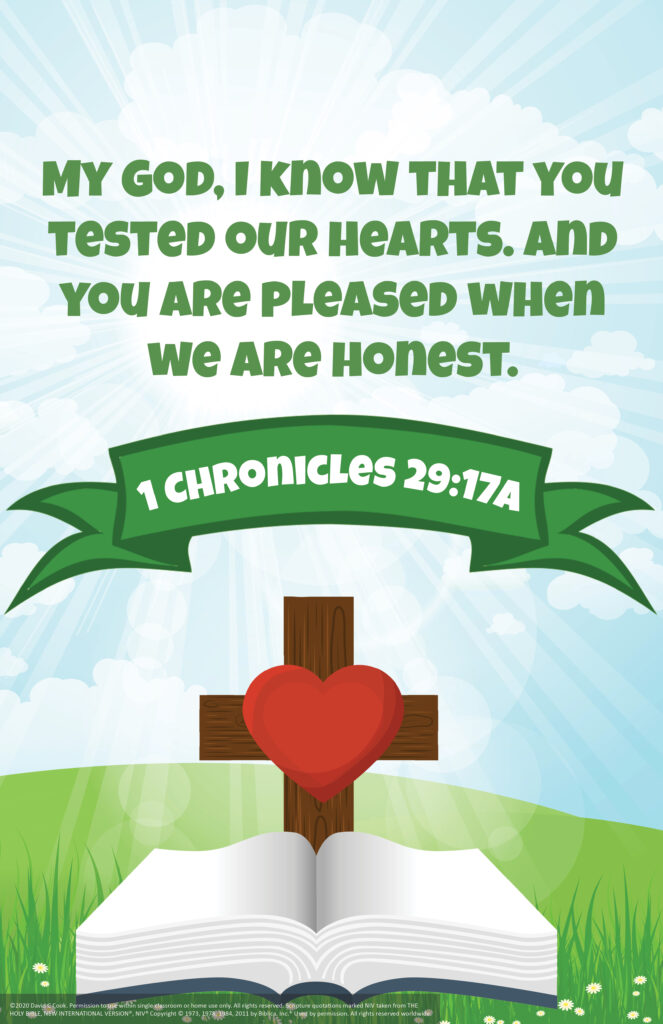
Sing the words to the Bible verse with the children. Use the same song you created in Lesson 5. Have the children repeat the song with you 3 times. Remember the song so you can sing it again for each lesson about truth and honesty.
End class by saying this blessing, based on 1 Kings 8:39, over the children.
Blessing: May you know that God understands your heart. May you live with an honest heart. May you be comforted and know that God hears you and can forgive you.
Lead the students in singing this quarter’s song, if possible.
Life on Life ©2020 David C Cook. Reproducible for home or classroom use only. All other uses require written permission from David C Cook [email protected]. All rights reserved.